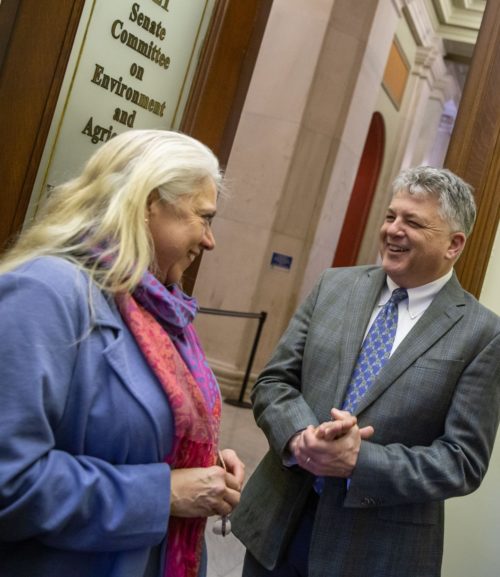
Grants & Scholarships
Cleaner than it’s been in 150 years—Narragansett Bay is not saving itself
Its name is its mission. Protecting the health and future of Narragansett Bay and its watershed has been Save the Bay’s goal for the past 50 years.
Founded by concerned citizens in 1970, the organization’s initial focus was on stopping proposed oil refineries in Jamestown and Tiverton. Through the decades the focus has evolved and expanded —to industrial pollution in the 80s, habitat restoration in the 90s, and a major investment in education in the 2000s.
“Any organization that’s been around for 50 years needs to adapt and change. What began as a tiny advocacy group now is an organization that has —and has earned—a seat at the table where environmental issues are being discussed."
- Jonathan Stone, executive director of Save The Bay
Jonathan credits each of the three executive directors who preceded him with helping build the organization into the environmental powerhouse it is today. “Jon Scanlon started it all. He was the creative instigator. Trudy Coxe was the firebrand, the rabble-rouser. And Curt Spaulding transformed the organization into an institution with enduring capacity,” Jonathan believes. Both Trudy and Curt now are members of the Save The Bay board of trustees.
And Jonathan’s legacy? Smiling, he says that under his leadership, “The ship did not go down.” He explains that soon after he took over the reigns as executive director in 2009, significant federal funding—on which Save The Bay relied heavily—dried up. “We needed to reduce costs, increase program revenue, and increase philanthropy. Rhode Island Foundation played a really critical role in our evolution,” Jonathan says.
The grants from the Foundation were pivotal, and he also notes the value of Foundation capacity building workshops that he and both staff and board members attended. “We’ve never been more impactful. We’ve spent a lot of time on execution. We have an incredible group of people who are helping us: a board that is very engaged in our work and a staff of the most professional, capable, compassionate people,” Jonathan shares.

The Foundation’s support of Save The Bay goes back to the environmental group’s earliest days. Records show that the Foundation awarded a “modest grant” of $1,000 in 1972 for general support. Today, Save The Bay is in the second year of a multi-year grant for its advocacy, education, and outreach initiatives. “The funding from Rhode Island Foundation allows us to retain staff capacity and to respond to things that are hard to predict,” Jonathan adds.
He continues, “We’re often asked, ‘Are we done? Is the Bay clean enough?’ There are three big things we need to be concerned with. The first is climate change and the affect it’s having through rising sea levels and warmer waters. The second is that our forests are being replaced by suburbs. We need to make smart changes in our land use and real estate development. And finally, we need enforcement of existing environmental laws and the creation of a recurring funding stream for climate adaptation.”
“Environmental problems can seem overwhelming, but there are things we can do. It’s a question of whether we make it a priority. At Save The Bay, we ask ‘What can we do?’ There’s a ton we can do, and I’m very optimistic. There’s great opportunity to have an impact,” Jonathan concludes.
Indeed, it’s what Save The Bay has been doing for 50 years.



